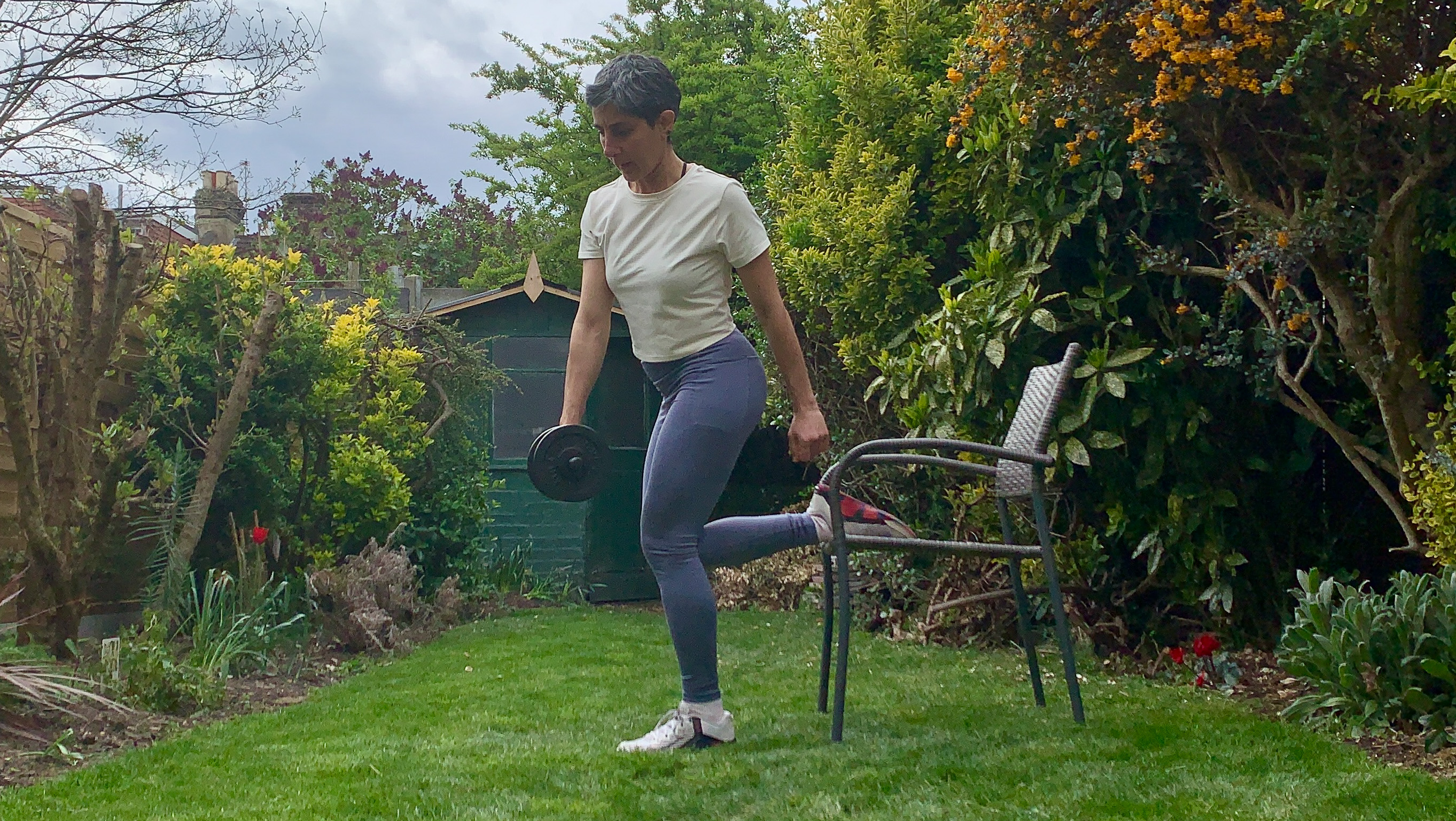Heart rate training for runners: a guide to improve performance
Everything you need to know about heart rate training for runners and the benefits of running in HR zones


If you're a runner who's not familiar with heart rate training, then now is the time to learn. Training in this way can not only help improve performance, helping you to run longer, but also brings general health benefits too.
If you own any sort of fitness wearable, then you'll no doubt be familiar with your typical heart rate, both at rest and during activity. This data comes as standard on the best fitness watches, and nowadays even some of the best fitness trackers offer this info.
This is made possible by optical wrist sensors on these devices, although more accurate readings come courtesy of the best heart rate monitors. All devices track your heart rate (HR) whilst you're wearing them, so you can analyze the data and see what your resting HR is at a glance. They also provide data on your average and maximum heart rate (MHR) during activity.
But what does this actually mean? And can you use your heart rate to train more effectively?
We spoke to Kevin Betts, running coach, personal trainer and founder of virtual run club Run Things, to find out about the importance of heart-rate-based training, how you can do it and what the benefits are.
“As the heart is a muscle, it can be trained within reason just like other muscles in the body,” he says. “If you work it out in the right ways, you can make it pump more blood per stroke which, in turn, sends more oxygen to the muscles in your legs to keep you running for longer – all while that same blood takes away the ‘waste’ produced by your muscles when they work hard.
“If you get to know how your heart works more intimately, you can build up an understanding of its progress and development, measure it and reassess goals.” You can also track your heart rate to help your weight-loss goals.
Get the Fit&Well Newsletter
Start your week with achievable workout ideas, health tips and wellbeing advice in your inbox.
An introduction to heart rate training
If you are a runner trying to build a training plan for an upcoming event, you will no doubt base some sessions around variables such as speed, intensity or effort.
Intensity or effort can be difficult to quantify – often you’re trying to rate it out of 10, and your perceived effort can vary from the next person, and can even differ from day to day depending on how tired you feel.
This is where HR training comes in. “Although our hearts are unique to us, and everybody’s hearts are different sizes and beat at different rates, our own should beat at a regular and predictable level dependent on the intensity of the workout being done,” says Betts.
“If you can find out what your maximum heart rate is and/or your average for a given exercise, you should be able to work out different ‘zones’ to work in, thus creating different intensity levels that use different energy systems.
He continues: “A huge benefit of heart-rate training is that, unlike our minds, our heart does not try to trick us. It does its job and works as hard as it needs to, to get a job done. Our heart, so long as we are not ill, doesn’t make us question whether we can carry on – we either can (i.e. it’s working within its capacity) or we cannot (and so we must stop).”
This results in honest, reliable and consistent data. “For the training nerds among us, it also gives the best types of stats – those you can measure and use to track progress.”
How to work out your maximum heart rate
Determining your maximum heart rate (MHR) is not as straightforward as you may think.
The one-size-fits-all method is to minus your age from 220. But that is not a failsafe method, as many people work far in excess of the MHR suggested by that equation.
Betts suggests that the most accurate way is to work with a sports science lab to do tests – this is a far-from-cheap option, though.
“A happy medium is to work with a personal trainer to put together a progressive test where you gradually increase the speed of a treadmill until you have to stop – almost a modern version of the bleep test,” he says.
“The point at which you stop, so long as it’s not your brain that gives in first, is essentially where your maximum heart rate is.”
Heart rate training zones explained
Heart rate zones are usually divided into five, getting higher as the HR (and perceived effort) increases:
- Zone 1: 50% of your MHR - very easy work
- Zone 2: 60% of your MHR - easy work
- Zone 3: 70% of your MHR - moderate work
- Zone 4: 80% of your MHR - hard work
- Zone 5: 90% of your MHR - very hard work
By ‘zoning’ training runs, you can look at your HR reading on your watch as you run and ensure you stick within a certain boundary.
“It requires discipline, though,” says Betts. “You might ‘feel’ more comfortable than your HR is telling you, for instance. In which case, you need to curtail that thought that you should go faster.”
HR training is entirely about intensity and not about speed. “If you get fitter, then you will get faster within the HR zones. So on day one of a training program, a 10k run in HR zone 4 might take you 52 minutes. But eight weeks later, the same run in the same zone might bring that time down to 50 minutes. Same effort/intensity, but a quicker run.”
Heart rate and fitness goals
In running, we often bogged down in terminology and ‘new’ ideas. Effectively, though, these concepts always remain the same: you should vary training and mix in easy, moderate and hard workouts, aim to increase intensity and volume slowly and measure your progress where you can.
For people who like the predictability of using heart-rate zones, this training method is ideal for doing all the above.
The sessions you do will be determined by what phase of training you’re in, what your goal is and your fitness relative to the target.
Running workouts for different heart rate zones
Betts recommends that in a standard week, your training might include workouts that target different HR zones.
“For instance, an hour in zone 2 on a Monday is an easy run to keep the legs ticking over. Then mid-week, there might be a ‘race pace’ run where, if you have a specific time in mind for your target race, you see what zone you are currently in for that pace.
“The duration of that race-pace run would depend on the target distance: 30-50 minutes for a 10k target, perhaps, or an hour for a half marathon, and maybe 70-80 minutes at marathon pace. This is a great way of indicating whether you feel that your heart can sustain those effort levels for the time needed to complete the race at the desired pace.
“You should also include some zone 4-5 efforts. An intervals session, where an hour is broken up into 10 minutes in zone 2, then four lots of 10 minute efforts in zone 4, with two minutes’ rest between each effort, followed by 10 minutes back in zone 2.
“This type of sessions pushes your cardiovascular system, making it more efficient at both sustaining hard effort but also in ensuring you recover as quickly as possible.”
Howard is a freelance health and fitness journalist and copywriter. He has written for publications including ShortList, Runner’s World, Trail Running, Women’s Running, Red Bulletin, Wareable and Cycling Weekly. He enjoys nothing more than lacing up his trail shoes and heading out to explore new trails. He’s run ultramarathons everywhere from the French Alps and Canadian mountains to the Welsh coast and Peak District. When not running, he’s usually found hitting his local MTB singletrack trails or on a quest to find the country’s best cinnamon bun.
-
 I swapped my usual core routine for this dumbbell workout—here’s why you should try it too
I swapped my usual core routine for this dumbbell workout—here’s why you should try it tooPick up some dumbbells and try my favorite deep core exercises
By Yanar Alkayat
-
 You don't need any equipment to improve your posture—just these three back-strengthening moves
You don't need any equipment to improve your posture—just these three back-strengthening movesThese three exercises will strengthen key back muscles
By Jennifer Rizzuto